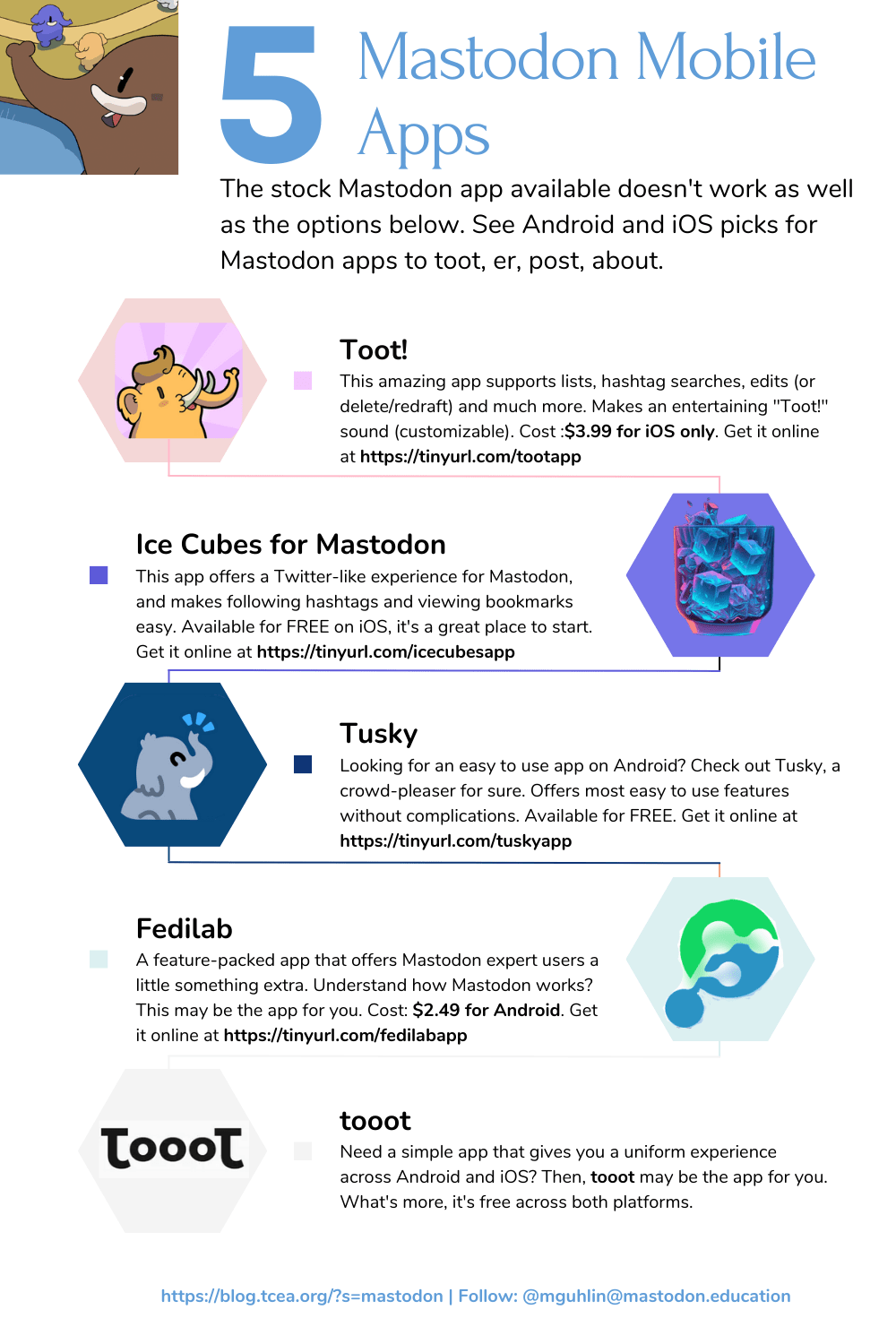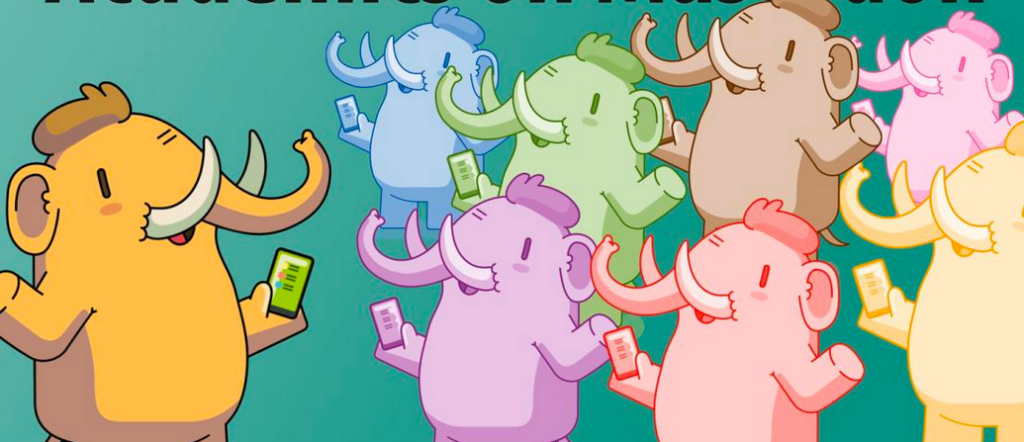Looking to expand your network and connect with educators, find tools, problem solve, and share even more on social media? Mastodon could be an additional option to explore. But what is it? And what does this free and open source software (FOSS) offer educators? This social network is a federated universe of websites that offers similar services to Twitter. It is comprised of independent servers called instances which act as independent communities, usually based on themes or topics. Let’s look at how to get started with Mastodon and go over some tips along the way.
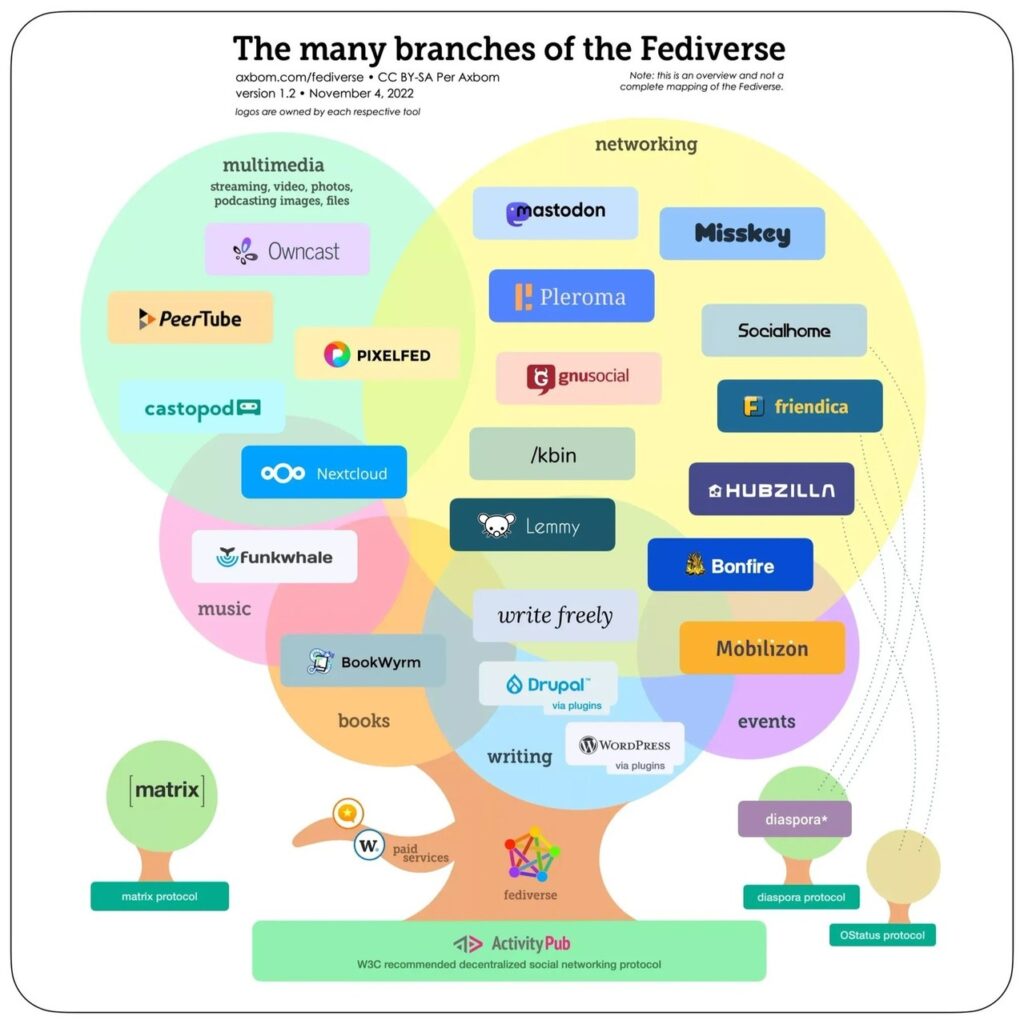
Glossary of Helpful Mastodon Terms
Before we get started, let’s take a look at some helpful terms related to Mastodon. Since it doesn’t use the same vocabulary as other social media and networking platforms, going over these terms will give you a point of reference as we walk through the steps to creating an account and diving in.

Bookmarklet: A bit of code you add to your browser (drag-and-drop) so that you can share webpages you are reading with others via your Mastodon account. Read tutorial.
Domain Block List: A list of blocked domains that have been found to send out spam. You can import or add a list of blocked domains to your Mastodon account so you can block unwanted spam or attacks from others. Read this short “tootorial.”
Federated: The fediverse is an ensemble of federated servers that are used for web publishing and file hosting, but which, while independently hosted, can communicate with each other. On different servers, users can create so-called identities.
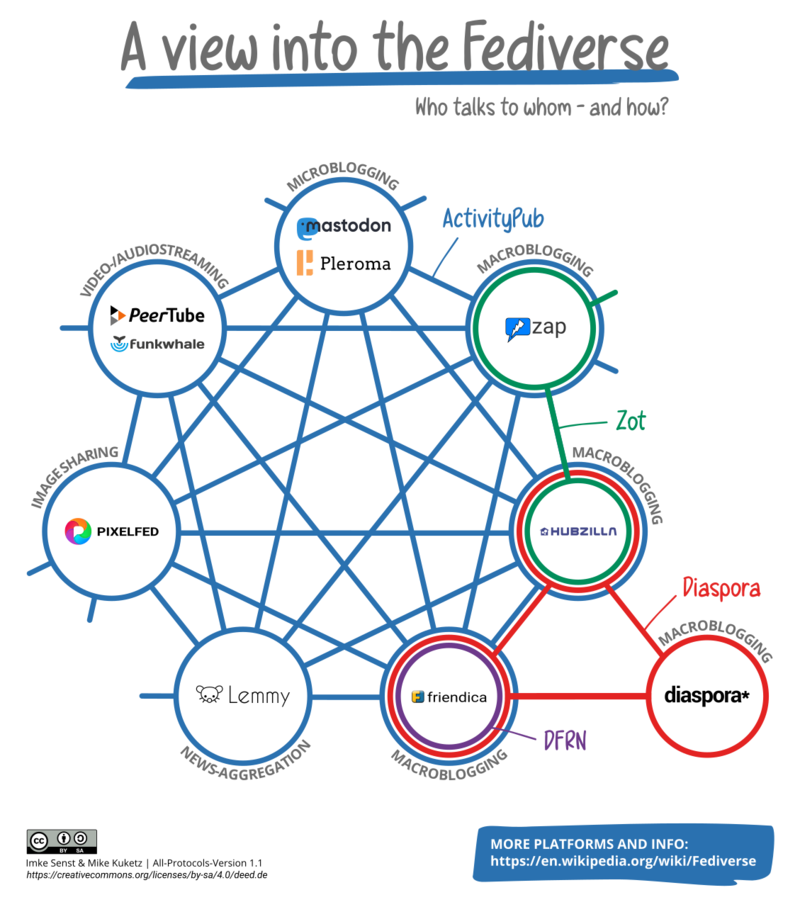
Fediverse: A non-centralized network of loosely joined web servers that offer a variety of services. Mastodon is but one of the many types of services you will find in the Federated Universe (or fediverse for short).
Following List: A list of the people you are following. This list can be added via a CSV upload, or manually one by one. Read this short tootorial for instructions on importing an educator list.
Group: Several online groups allow you to reach a wider audience. Post to a group, and many more people will see it. One popular educational technology group is @edtech@chirp.social. Other groups can be found at Chirp.Social and A.Gup.Pe. Hashtags, though, are the preferred way of connecting with others on Mastodon.
Instance: This term refers to a server that runs a copy of Mastodon software, not unlike a Moodle instance or Wordpress instance. You can also think of a Mastodon instance as a self-governed community, each with its own set of rules and guidelines, some more strict than others.
Mastodon: The software that runs on a web server that makes this social media, or social networking, solution work.
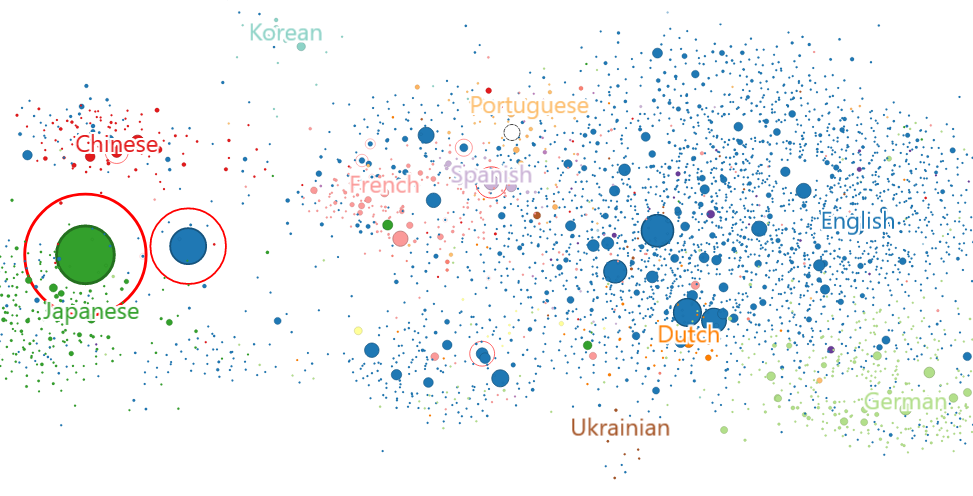
Post: Previously known as a “Toot,” this is what a post you make is called. The act of posting is also known as “tooting” or “publishing.”
Tootorial: A portmanteau of the words “toot” and “tutorial.” It is a tutorial about Mastodon topics.
How to Create a Mastodon Account
If you have about forty minutes, you can watch as I create an account in a Mastodon instance. It walks you through the opening steps of Mastodon. Does it take forty minutes to do everything? No, you can get set up pretty quick.
- Part 1 – Introductions and Selecting a Mastodon Instance
- Part 2 – Exploring Mastodon Preferences, Importing Following Lists, Adding People
- Part 3 – Apps to Use on Smartphones and Tablets
- Part 4 – Migrating from One Mastodon Instance to Another
- Part 5 – How to Set Up Your Profile, Bio, and Pin a Post
- Part 6 – Importing the EduTooters List
If you’d rather watch the videos later, here are five quick steps to follow to get started and start connecting.
Five Steps for Joining Mastodon
Step 1: Pick a Mastodon instance and create your account.
I recommend using a web browser to create your account. The smartphone app will limit the number of communities (instances) you are able to see to seven or eight, and there are currently more than 13,000 Mastodon instances!
You can click one of the education-focused Mastodon instances listed below, and then “Create an Account.” Or you can click the invitation button below. Since Mastodon is a collection of instances, you can pick any instance to start with. You can always move to a new one later.
- https://mastodon.education/
- https://mastodon.oeru.org/
- https://sotl.social/
- https://openedtech.social/
- https://social.ds106.us/
- https://mastodon.education/
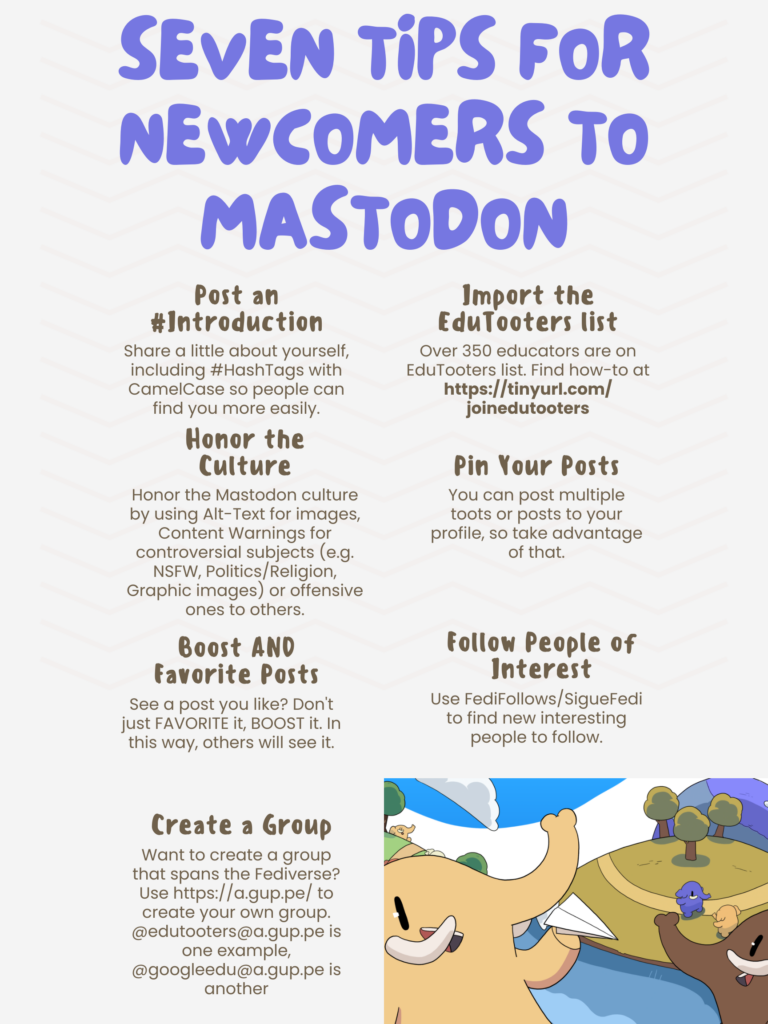
Step 2: Get the right app for your smartphone or tablet.

A lot of folks get the official Mastodon app. But there are many apps that work better than the stock Mastodon app. For example, you can’t post animated GIFs with the stock Mastodon app. Instead, use one of the apps below and install the Gboard GIF Keyboard (available for iOS and Android).
Here are some options for free and paid apps:
Free apps include:
- Android: Tusky – This is the best free app I’ve encountered for Android. It’s not quite MetaText quality, but it makes a strong effort.
- iOS: Ice Cubes for Mastodon – This is a nice iOS app that is free. Another app that works for both Android and iOS is tooot.
Paid apps include:
- FediLab ($2.49) – This app is my preferred app on Android, as it works smoothly and without issue.
- iOS: Toot! ($3.99) – This is a great app and has the added benefit of making “tooting” sounds (although you can turn that off).
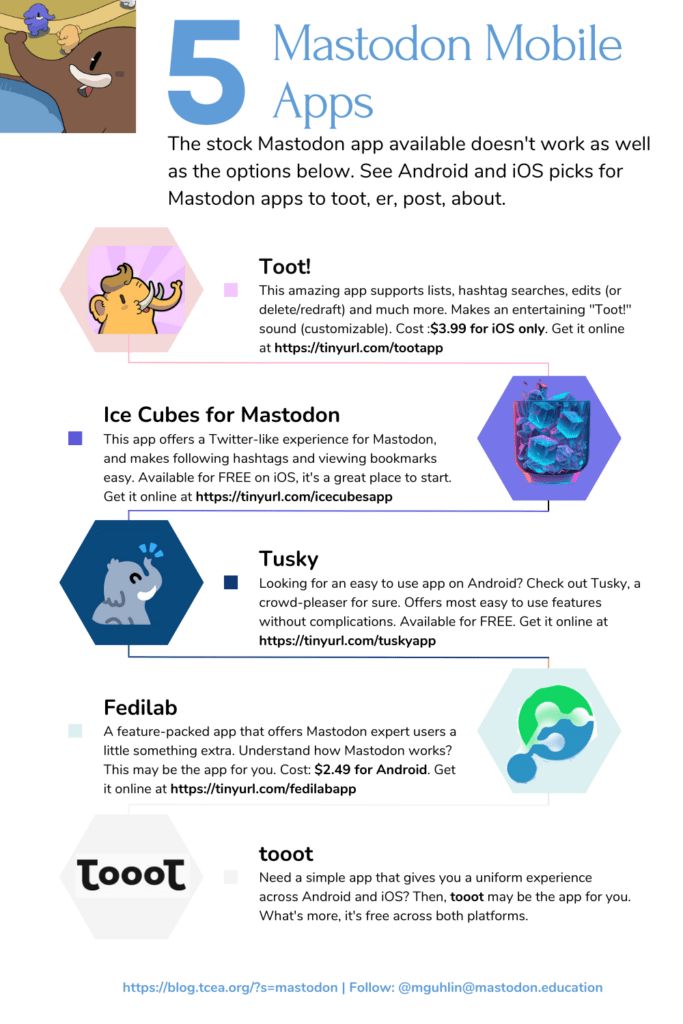
Step 3: Create a hashtag-rich introduction.
Mastodon lacks an algorithm to throw content at you, so this means there isn’t any advertising except what others post, and you must use hashtags to make it easy for people to find you. If you are into education, use hashtags that reflect your interests.
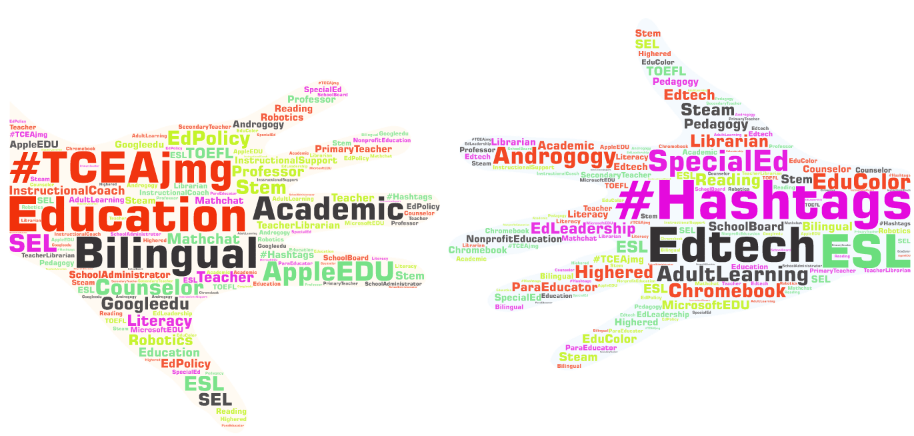
Here’s a short list of some hashtags you can include, although the sky is really the limit:
- #Academic
- #AdultLearning
- #Bilingual
- #Counselor
- #EdTech
- #Education
- #EduColor
- #ESL
- #GoogleEDU
- #HigherEd
- #InstructionalCoach
- #InstructionalSupport
- #k16
- #Librarian
- #Literacy
- #MathChat
- #MicrosoftEDU
- #NonProfitEducation
- #Paraeducator
- #Pedagogy
- #PrimaryTeacher
- #Professor
- #Reading
- #Robotics
- #SchoolAdministrator
- #SpecialEd
- #Teacher
- #TCEAjmg and #TCEA
- #TOEFL
Note: Notice that the hashtags use PascalCase. This a cultural norm on Mastodon that caters to the blind using screen readers. You can either mix hashtags throughout the text of your posts, or add them at the end.
Here’s what my Mastodon profile looks like, hashtags and all:
Step 4: Follow people and import the EduTooters list.
Since it can take time to find people, here’s a quick way to reconnect. Use the EduTooters list to get started. It includes over 500 educators who have joined Mastodon. Here’s a detailed tutorial on how to import the list of educators into your Mastodon account.
Be sure to follow the #edtech and #TCEAjmg hashtags (you can follow hashtags and pin them to your profile) once you get your account set up.
Watch this short video on how to import a CSV file from Google Sheets EduTooters list into Mastodon:
Step 5: Learn the culture and bookmark items of interest.
Get to know the culture of Mastodon and boost what you like, don’t just “favorite” or star it. Also, bookmark anything of interest so you can easily find it again. The Fediverse is a big space. If you’re not sure where your toots may end up, the chart below may help:
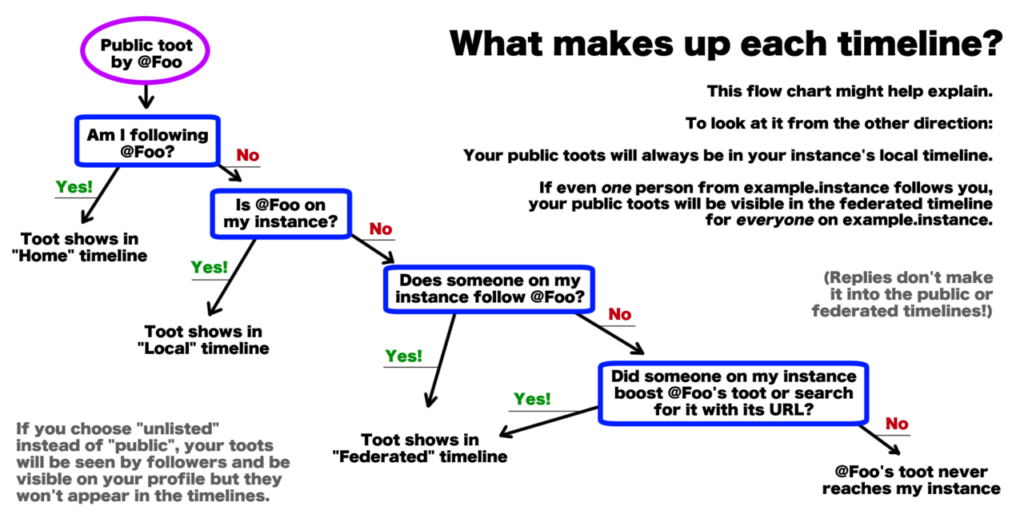
Data Security and Privacy
Many often ask, “How safe is my data on Mastodon?” You can find the rationale behind why people put up Mastodon instances and see who actually holds your data in Mastodon.
Additional Resources
Want more tips? I’ve organized a series of tutorials you can take advantage of:
- A Toot Bookmarklet for Sharing Websites: Add this bookmarklet to your device so you can share webpages you visit to Mastodon.
- Translating Toots/Posts in Mastodon: Encounter foreign languages in Mastodon? Translate them on the go with these add-ons.
- Tootorial for Making Backups of Your Mastodon Data: Learn how to backup your Mastodon instance data, like bookmarks and your following list.
- Curating News Sources on Mastodon: Learn how to quickly add news organization accounts so you can be up to date on the news while in Mastodon.
- Find Twitter Friends’ New Mastodon Address: It’s normal to miss your friends. These tools can assist you in finding those who have made the effort to make themselves visible.
- How to Use Mastodon and the Fediverse: An excellent guide to Mastodon.

